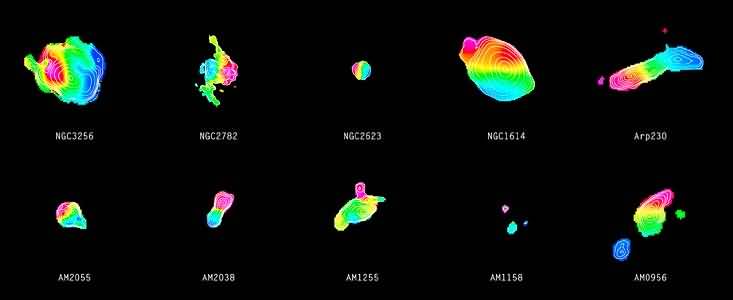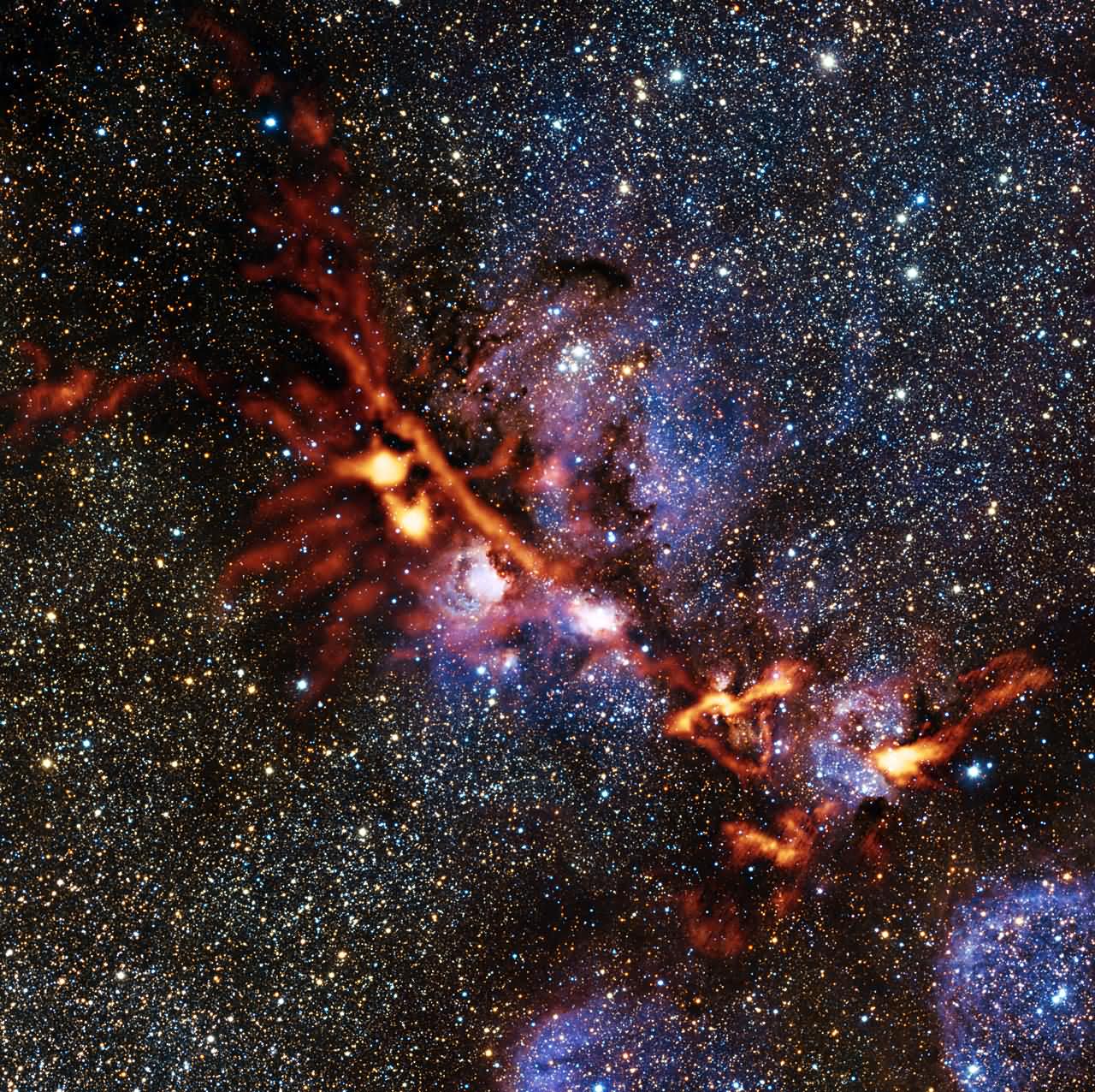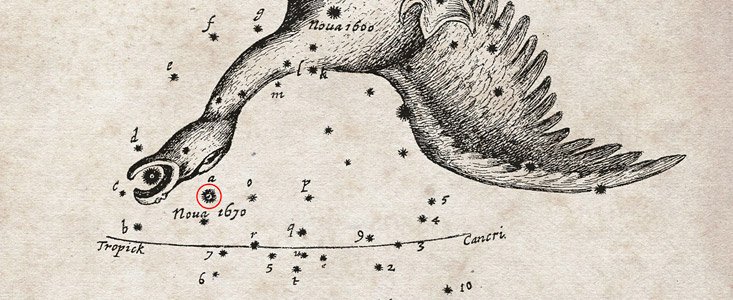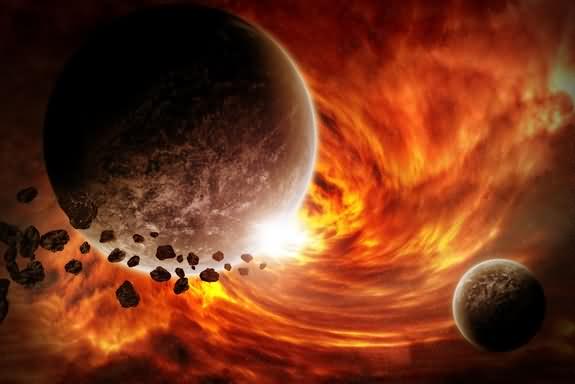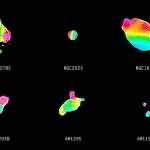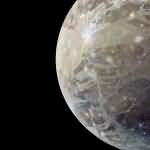Galactic Collisions – Milky Way and Andromeda Galaxy
We know that due to the expansion of the universe, galaxies are moving away from each other, and the farther they are from us, the faster they are moving away. We even know that after a certain point, even at normal speeds, they are moving away faster than light due to the expansion. Therefore, since light from most of the universe never reaches us, we can only observe a portion of it we call the visible universe.
But not all galaxies are moving away from each other. There are clusters of galaxies, called galaxy clusters, where many galaxies are located. Gravity holds these galaxies together. For example, galaxies like Andromeda are our neighbors in our local galaxy cluster. The Andromeda Galaxy, however, is moving directly toward us.
The Andromeda Galaxy is 220,000 light-years across, larger than the Milky Way (100,000 light-years). While the Milky Way contains an average of 300 billion stars, the Andromeda Galaxy contains 1 trillion stars. Its speed is 402,336 km/h, 2,000 times faster than the Milky Way. Its direction is us.
Astronomers estimate that a collision between two galaxies will occur in approximately 4.5 billion years. While this may seem daunting, it's actually quite common in the universe. Dwarf galaxies collide to form larger elliptical galaxies like ours. The Andromeda Galaxy collided with another galaxy before ours. The Milky Way, meanwhile, has collided with many dwarf galaxies like the SagDEG. In fact, it's already merging into a dwarf galaxy on the other end.
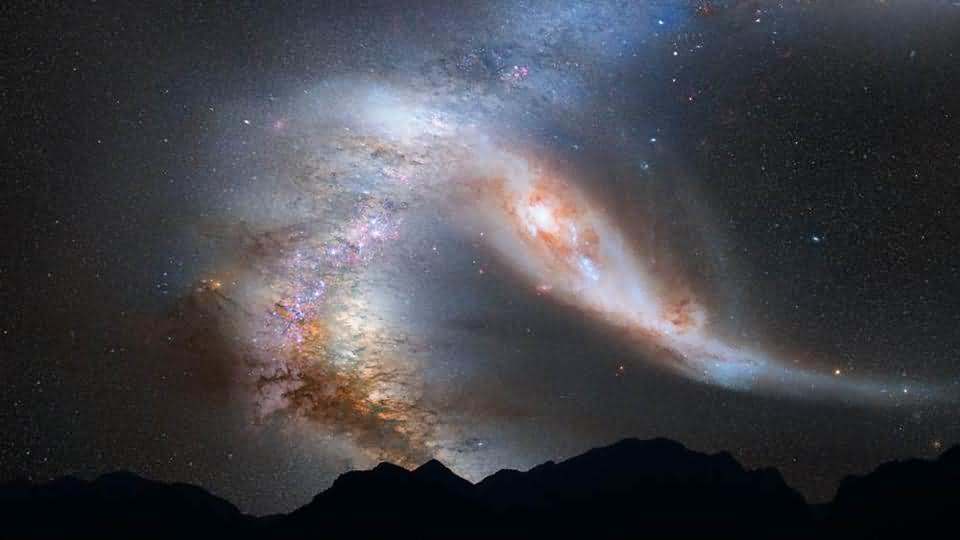
If the Earth is still in place and we are alive during the collision of the Andromeda and Milky Way galaxies, this is what we will see.
Öncelikle bazı yerlerde ve bazı kişilerce bu durumun sanki güneş sisteminin ve yıldızların yokoluşu gibi anlatmasından rahatsızlık duyduğumu söyleyip gerçeklerden bahsedeğim. Her iki galaksinin de yıldız sayılarını yazdım zaten. Güneş’in en yakın komşusu Alfa Centauri 4,2 ışık yılı uzaklıtkadır. Eğer Güneş bir pinpon topu büyüklüğünde olsaydı Alfa Centauri 1100 km uzaklıktaki bir bezelye olurdu. Şimdi ise her iki galaksideki yıldız sayısına ve galaksilerin büyüklüğüne göre yoğunluğunu hesapladığımızda ortalama 3,2 km’de bir pinpon topu büyüklüğünde bir yıldız olduğu anlaşılır. Galaksinin büyüklüğü ise 30 milyon km olur. Yani böyle bir çarpışmada kütleçekim etkisi ile galaksinin dışına savrulma ihtimali dışında hiç bir şey olmayacaktır güneş sistemine çok büyük bir ihtimalle. Eğer dışa savrulursak ta pek bir farklılık olmayacaktır, büyük Samanyolu manzarasının gitmesi dışında. %50 ihtimalle galaksinin merkezine olan uzaklığımız 3 katına çıkacak ama galaksi içerisinde kalacağız. Tabi biz derken güneş sisteminden bahsediyorum.
Anyway, back to our topic.
The merger of two galaxies will result in the following: As the rate of condensation in interstellar dust and nebulae increases, the rate of star formation will skyrocket. Consequently, the number of baby stars, known as protostars, will increase dramatically. In this case, the nebulae will become brighter, and the supermassive black holes at the center will consume more matter—possibly even becoming quasars. Due to the excessive star formation, the amount of hydrogen in the interstellar medium will decrease significantly.
It will take approximately 2 billion years for gravity to unite and stabilize each galaxy, and even longer for the supermassive black holes at their centers to merge. But this isn't the end of our story. Andromeda isn't alone; it has a companion.
Messier 33, also known as the Triangulum Galaxy, is the third-largest galaxy in our local galaxy. A few billion years after the two galaxies merged to form the Milkdromedia Galaxy, they will collide with the Triangulum Galaxy. The resulting larger galaxy will attract other galaxies, leading to further collisions. Ultimately, all the galaxies in the local galaxy cluster will merge, creating a giant, dead galaxy where star formation will cease, as the interstellar medium is depleted of raw materials.
You can watch the animation of two galaxies merging in the video below.


